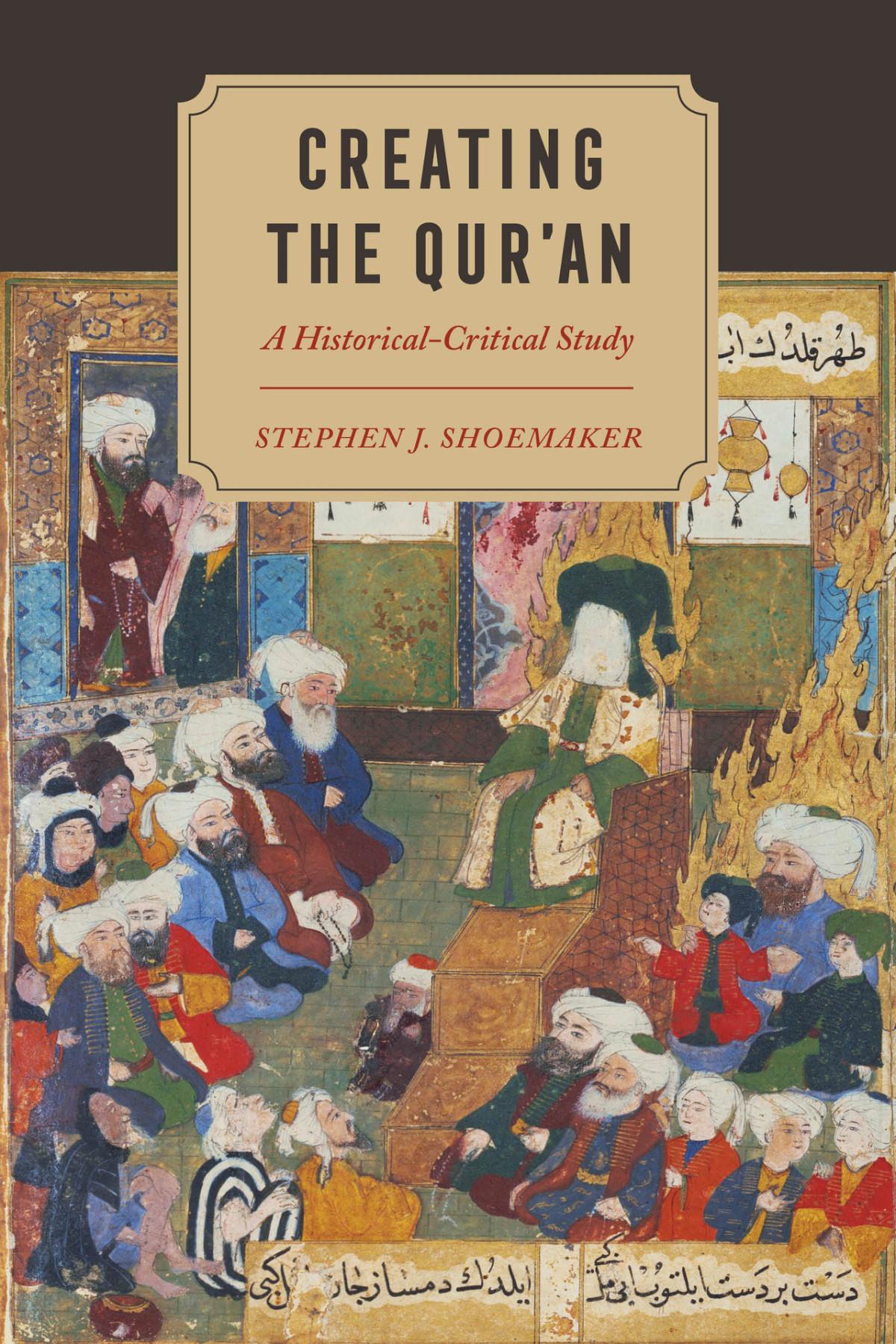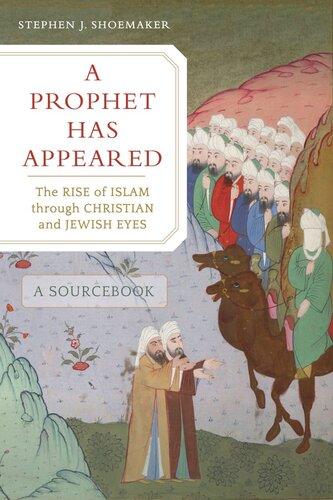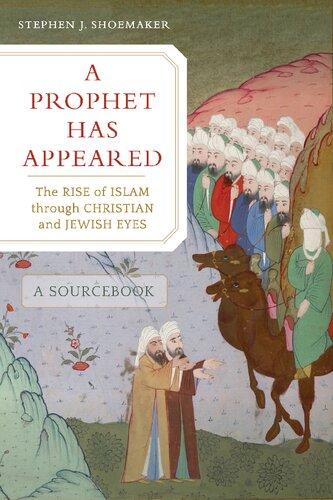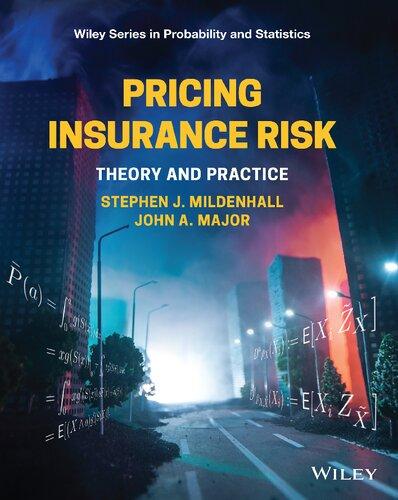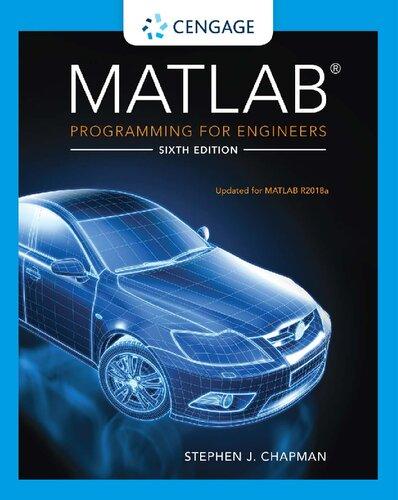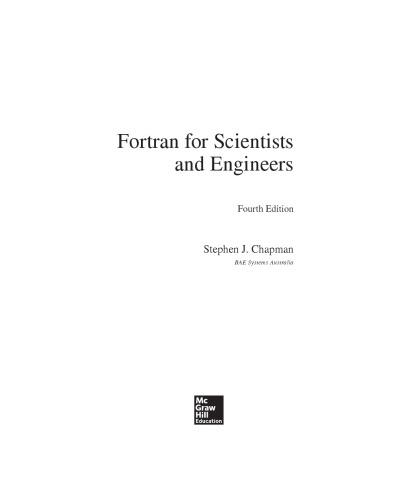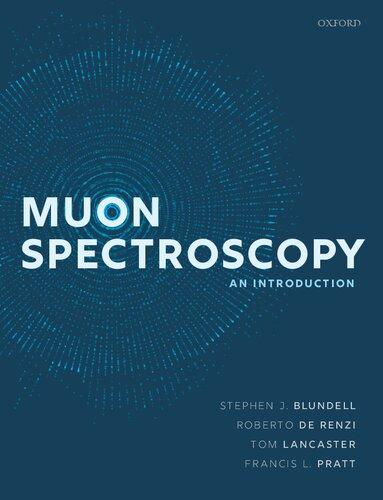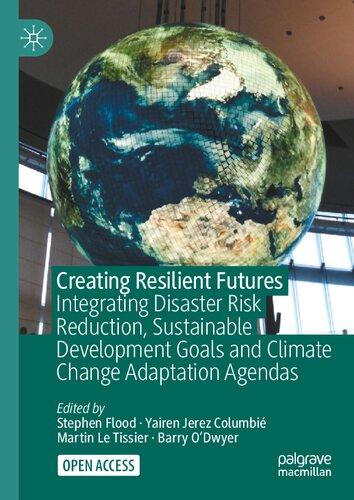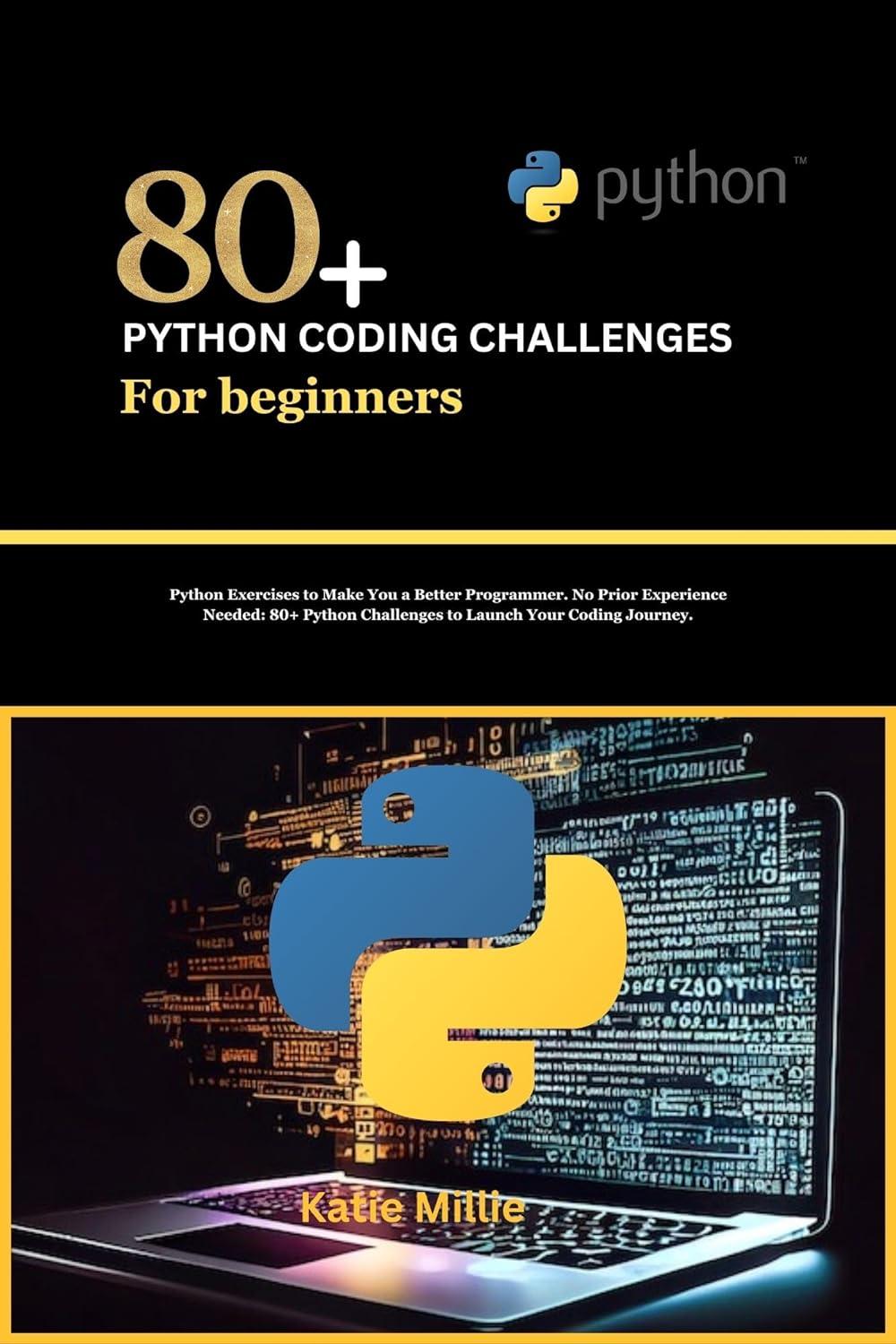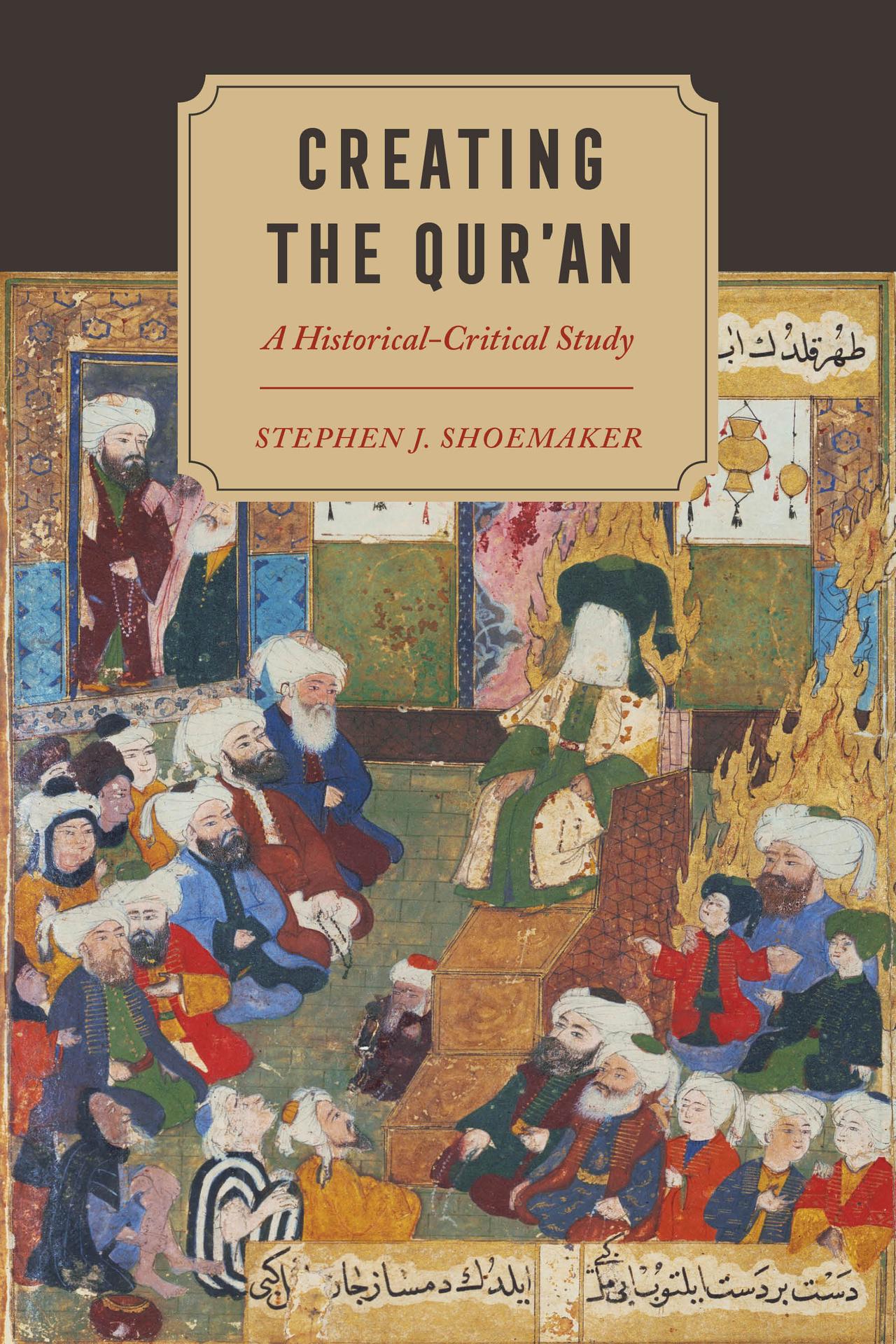Creating the Qur’an
A Historical-Critical Study
Stephen J. Shoemaker
UNIVERSITY OF CALIFORNIA PRESS
University of California Press Oakland, California
© 2022 by Stephen J. Shoemaker
is work is licensed under a Creative Commons [CC BY-NC-ND] license. To view a copy of the license, visit http://creativecommons.org/licenses .
Suggested citation: Shoemaker, S. J. Creating the Qur’an: A Historical-Critical Study . Oakland: University of California Press, 2022.
DOI: https://doi.org/10.1525/luminos.128
Names: Shoemaker, Stephen J., author.
Title: Creating the Qur’an : a historical-critical study / Stephen J. Shoemaker.
Description: Oakland, California : University of California Press, [2022] | Includes bibliographical references and index. ISBN 978–0-520–00000–0 (cloth : alk. paper)
Identi�ers: LCCN 2021060219 (print) | LCCN 2021060220 (ebook) | ISBN 9780520389038 (paperback) | ISBN 9780520389045 (ebook)
Subjects: LCSH: Qur’an—History. | Qur’an History Sources. | Qur’an Criticism, interpretation, etc.—History Sources.
Classi�cation: LCC BP131 .S56 2022 (print) | LCC BP131 (ebook) | DDC 297.1/2209—dc23/eng/20220129
LC record available at https://lccn.loc.gov/2021060219
LC ebook record available at https://lccn.loc.gov/2021060220
Manufactured in the United States of America
28 27 26 25 24 23 22
10 9 8 7 6 5 4 3 2 1
For
the Loncoske sisters
CONTENTS
Acknowledgments
Introduction
1. e Traditional Narrative of the Qur’an’s Origins: A Scholarly Sunnism
2 ʿ Abd al-Malik, al- Ḥ ajjāj, and the Composition of the Qur’an
3. Radiocarbon Dating and the Origins of the Qur’an
4. e Hijaz in Late Antiquity: Social and Economic Conditions in the Cradle of the Qur’an
5. Literacy, Orality, and the Qur’an’s Linguistic Environment
6. Remembering Muhammad: Perspectives from Memory Science
7. Re-Remembering Muhammad: Oral Tradition and Collective Memory
8 e Qur’anic Codex as Process: Writing Sacred Tradition in Late Antiquity
9. e Qur’an’s Historical Context According to the Qur’an
Conclusions
Notes
References
ACKNOWLEDGMENTS
e project that resulted in this book was originally conceived within the scope of my participation in the Center for Advanced Study “Beyond the Canon,” a collaborative research group at the University of Regensburg, funded by the Deutsche Forschungsgemeinde, and it marks my primary contribution to this ongoing Collaborative Research Group. I am enormously grateful for having been invited to participate in this research group as well as for the considerable intellectual and �nancial support that it provided for my research. My thanks especially to Tobias Nicklas, for initially inviting me to be a part of this project, and also to the two other directors, Harald Buchinger and Andreas Merkt. Likewise, I thank Stephanie Hallinger, the center’s academic director, and also the center’s research assistants, Charlotte von Schelling and Marko Jovanovic, for all of their help with my research and stays in Regensburg in 2019 and then in 2021–22. All have become close friends and valued collaborators in the process, contributing valuable ideas and perspectives to my research during the last several years on a number of topics. My stay in Regensburg was initially planned for 2020–21, but it was delayed a year owing to a number of factors, not the least of which was the global coronavirus pandemic. I am delighted now at last to be in Regensburg, where, �ttingly, I completed and submitted the �nal manuscript for this book.
In as much as the particular focus of the Regensburg Center for Advanced Study is the contours of the Christian canon during late antiquity, there is perhaps some need for explanation of why a book on the canonization of the
Qur’an is nonetheless an essential part of this broader, collaborative research trajectory. Initially, I had conceived of this book along somewhat different lines. It was my intention to write a book that would be titled “Qur’an and Canon: e Contours of Scripture at the End of Antiquity.” e plan was to investigate the Qur’an’s emergence as a new scriptural tradition in the late ancient Near East from a novel perspective, understanding the Qur’an as a late ancient biblical apocryphon that eventually became the scripture of a new religious tradition. By approaching the Qur’an as a late ancient biblical apocryphon of uncertain origin, whose scriptural destiny was not yet determined, it would be possible to study the Qur’an as a witness to the diversity and creativity of religious culture in the late ancient Near East. When viewed from such a perspective, the Qur’an offers a fascinating example of how an emergent religious community approached both the boundaries and the riches of scriptural culture in late antiquity. e idea was to consider how the Qur’an recognizes and embraces the authority of these antecedent scriptural collections while simultaneously recon�guring and supplementing their contents. From this perspective, the Qur’an can challenge and inspire us to rethink the boundaries of the scriptural canon in late antiquity, as well as conceptualizations of scripture that were in circulation at this time.
For better or worse, that is not the book I have written. Perhaps I will write it someday soon, and I think it is a worthy project, perhaps for others to pursue as well. Nevertheless, as I set out to write, I was hoping that I could deal with the thorny issues surrounding the date of the Qur’an, its transmission, composition, and canonization, in only a couple of chapters at the end of the study. Almost immediately, as soon as I began to set pixel to page, I realized that this would not work. e whole process of the Qur’an’s production has been so underresearched from a critical perspective that there was simply no way to avoid beginning with this subject. Yet, as I began to write about this topic, it quickly became clear that it would take much more than just two chapters to set the terms for the historical-critical study of the Qur’an as part of the scriptural world of Near Eastern late antiquity.
Indeed, it was not long before I realized that this was going to be the subject of the entire book, and it was going to be a long book at that. And so, rather than considering the Qur’an primarily as a witness to the rich world of late ancient apocryphicity, I have instead critically analyzed the process by which the Qur’an emerged from the scriptural surfeit of late antiquity, both canonical and noncanonical, to become the new canonical scripture of a new religion, Islam. It is a topic, I would venture to say without hesitation, which is essential for understanding the “heterotopias” of religious authority in late antiquity, as well as the production of scriptural traditions “beyond the canon ” and the various canonical processes at work in this pivotal era.
I also owe signi�cant gratitude to a number of other benefactors for their support of this project. Firstly, I would like to thank the Institute for Research in the Humanities at the University of Wisconsin–Madison for the support of a Robert M. Kingdon Fellowship, which, combined with a sabbatical, enabled me to focus on writing this book during 2020–21. Unfortunately, thanks to the coronavirus, I never made it to Madison, much to my disappointment. But I thank the institute’s director and staff, Steven Nadler, Ann Harris, and Elizabeth Nealy, for their creativity and �exibility in making for a successful fellowship year despite a raging pandemic. I also thank the other scholars in residence in our unusual virtual community for the many insights I gained both from their own research presentations and their questions and comments regarding my own.
is project was also supported by a National Endowment for the Humanities grant, which I was able to defer until 2021–22 so that I could hold it simultaneously with my senior fellowship at the Center for Advanced Study in Regensburg. Other resources made it possible to take the year off from teaching on a research appointment, including support from a Presidential Fellowship in Humanistic Study from the University of Oregon and from the Ira E. Gaston Bequest at the University of Oregon through my appointment as Ira E. Gaston Fellow in Christian Studies for 2018–21. A Faculty Research Award from the University of Oregon for summer 2019 provided the opportunity to begin some of the initial work on this project. I
am also grateful to the College of Arts and Sciences and the Department of Religious Studies at the University of Oregon for supporting me and allowing me to take this time to focus on research.
ere are also many individuals to thank for their important contributions to this volume, and I fear that in attempting to name them all I will forget several friends and colleagues who helped me out along with way with a suggestion or the answer to a question. To anyone I may have inadvertently omitted, please accept my sincerest apologies. In the �rst place, however, I must thank Guillaume Dye, who has become perhaps my single most frequent collaborator and interlocutor, particularly when it comes to matters regarding formative Islam. Guillaume’s contributions to this study would be hard to overstate. He read every chapter aer I had written it and came back with sage questions, comments, and advice: some he read even twice. We debated certain points at some length over email. Yet no less importantly, my thinking about this project began in earnest in fall of 2018, when Guillaume hosted me as an International Chair at the Centre interdisciplinaire d’Étude des Religions et de la Laïcité, Université Libre de Bruxelles. Our conversations during those months, which included Julien Decharneux, Robert Kerr, and Jan van Reeth, were formative for conceiving of this book. I should also add that this book’s primary inspiration came from one of Bart Ehrman’s amazing trade books, Jesus Before the Gospels , as any reader of both works likely will quickly recognize. Although Bart was one of my teachers, ironically, I only became aware of this book thanks to Guillaume.
I also thank my colleague in the Department of Religious Studies at the University of Oregon, David Hollenberg, who read the �rst two chapters and came back to me with some excellent ideas regarding how they could be improved. Likewise, I thank Michael Pregill, who is a constant email “ pen pal” on all sorts of topics, including early Islam: a number of the ideas in this book were run by Michael for his thoughts at one point or another. Fred Donner and Gabriel Reynolds also offered extremely helpful comments on the complete manuscript that helped me to avoid a number of pitfalls while
improving on many points. Last but not least I must thank my spouse, Melissa Aubin, who thought about many of the various issues related to this book, including especially the importance of memory and memory science. Others I must thank for various contributions of one sort or another include Mohammad Ali Amir-Moezzi, Sean Anthony, David Brakke, Éléonore Cellard, Rick Colby, Majid Daneshgar, Alba Fedeli, Reuven Firestone, Robert Gregg, Gerald Hawting, Morag Kersel, Anne Kreps, Andrew Marsham, Harry Munt, David Powers, Majied Robinson, Yorke Rowan, Jack Tannous, Tommaso Tesei, Mathieu Tillier, Dean Walton, and Philip Wood. No doubt I have forgotten some others as well, for which I apologize.
Early versions of some of the material that found its way into this book were presented in lectures at the following places: the Interdisciplinary Research Center on Late Antiquity, the University of Tennessee, Knoxville; the Religious World of Late Antiquity Section at the Society of Biblical Literature Annual Meeting; the Second Century Seminar in Fort Worth, Texas; and the ird Early Islamic Studies Seminar/Eleventh Nangeroni Meeting, Gazzada, Italy. I thank the organizers and the participants for these opportunities and also for their helpful questions and comments.
I also thank the editors and staff of the University of California Press for their help in preparing this book for publication. I thank Eric Schmidt especially, not only for encouraging the project but also for suggesting the possibility of pursuing Open Access in order to make the book more widely available. And that we have done. In this regard I am grateful to the University of California Press, the National Endowment for the Humanities, the University of Oregon, and the University of Regensburg Center for Advanced Studies “Beyond the Canon” for their contributions to meeting the costs to make Open Access possible. Likewise, at the University of California Press I wish to thank LeKeisha Hughes and Steven Jenkins for their help with preparing the manuscript and securing Open Access. My thanks also to Cindy Fulton and Gabriel Bartlett for their help in preparing the manuscript.
I should also note that in cases where an Arabic word or name has a clear form in English, we have decided to use this rather than transliterating the Arabic: Muhammad instead of Muḥ ammad; Qur’an instead of Qurʾ ān; Hijaz instead of Ḥ ijāz; sura instead of sūra, and so on. In cases where there is no clear equivalent in English, we have transliterated the Arabic using the American Library Association and the Library of Congress standard, which is commonly used, and which yields forms that are generally easy to recognize and remember.
Finally, there are the Loncoske sisters, my aunts, to whom I wish to express a different sort of gratitude with this book’s dedication. My mother was blessed with an amazing set of six aunts on her father’s side, most of whom she grew up with in the same small town and most of whom I also knew well into adulthood. ese great aunts were accomplished and inspiring women: Eunice, Agnes, Marie, Vivian, Jean, and Sally. All were bold, creative, smart, clever, and kind, in very different ways. ey were inspirational examples of the many amazing opportunities and adventures life had to offer in choosing to follow one path or another. But even more so I also want to thank especially my own aunts, my mother’s sisters, Susan and Linda, who are also amazing, for their love and for the profound impact that they have had on my life and its direction. I know that much of who I am today comes as a result of having them both in my life, for which I am enormously grateful. And of course, last but not least, I thank the most important and wonderful of the Loncoske sisters, my mom, Lois. I cannot express how lucky I am to have her for a mother.
Introduction
Homo sum, humani nihil a me alienum puto.
TERENCE , HEAUTON TIMORUMENOS 1 1
Scholars committed to the idea that the history made by Muslims is comparable to that made by non-Muslims can recognize that, taken as a whole , the reliable evidence suggests that Qur’anic texts must have remained at least partially �uid through the late seventh and early eighth century.
CHASE F . ROBINSON 1
e Qur’an’s origins are a mystery. e genesis of this new sacred text remains one of the most abiding and baffling puzzles from the religious world of late antiquity. So it is, at least, for those who are willing to approach the Qur’an on its own terms and in its immediate context, rather than allowing its history and signi�cance to be de�ned and controlled by the collective memory of the (much) later Islamic tradition. e truth is that we know precious little about the context or conditions in which the Qur’an �rst came to be: in many respects it seems to appear out of thin air into a world already saturated with Abrahamic monotheisms. Of course, the Islamic tradition stands at the ready to tell us everything we might want to know (and more) about the text and its origins. Perhaps understandably, then, modern scholarship on the Qur’an, with some notable exceptions, has been largely governed by traditional Islamic views of the Qur’an. Even many studies that seek deliberately to undertake historical-critical study of this text remain under the powerful in�uence of the Islamic tradition’s
gravitational pull, at times without even fully realizing it. So engrained have certain patterns from the Islamic collective memory become in the discourse of Qur’anic studies that they can be hard to escape. e result, as Angelika Neuwirth on one occasion rightly observes, is “that Qur’anic studies is not informed by the methods of religious studies as currently practiced internationally, but still follows a limited and selective set of methods which tend to be essentialist in their attitude towards the Qur’an.” Such obeisance to the Islamic tradition, rather than to the methods and perspectives of religious and biblical studies, she notes, re�ects a “failure of Qur’anic studies to locate the Qur’an at eye level with the other Semitic scriptures.” 2 Such is also Robinson’s point in the epigraph above: we must not study the origins of the Qur’an according to the convictions of the later Islamic tradition, but instead using the standard tools of historical criticism that scholars have long applied to the study of other sacred writings.
Nevertheless, when this document is approached from the perspective of the history of religion in late antiquity, rather than the discipline of Qur’anic studies, various widely acknowledged givens about the Qur’an drawn from the later Islamic tradition seem much less obvious and authoritative. From such a vantage point, the Qur’an appears instead as an enigmatic product of late ancient religious culture that demands investigation within this milieu in its own right, without allowing the Islamic tradition to dictate the terms of its study. Not only will such an approach bring better understanding of the Qur’an itself, illuminating the historical circumstances of its origin, formation, and canonization, but it will also allow the Qur’an to speak directly to our understanding of the diversity and creativity of religious culture in the late ancient Near East. e Qur’an, aer all, bears witness to a peculiar new religious movement arising from this matrix, one that is clearly modelled on the other Abrahamic monotheisms of this era, and yet it rearticulates many of their traditions in new ways and in different contexts.
For many potential readers, the very notion of approaching the Qur’an as a historical artifact from the religious cultures of late antiquity without allowing the Islamic tradition to de�ne the text and control its interpretation may be controversial or even unwelcome. is is a particularly problematic issue in the study of early Islam, much more so, it would seem, than in most other areas of religious studies. Many scholars, including many non-Muslims, reject any departures from insider perspectives regarding the Qur’an and early Islam as
being tantamount to an act of intellectual colonialism and even as anti-Islamic. Such opposition comes partly as a consequence, I suspect, of the fact that the study of early Islam developed for most of its history outside religious studies and instead in departments of Middle Eastern studies, where philology and understanding of modern Middle Eastern cultures, rather than the critical historical study of religious traditions, were the primary focuses. 3 Of course, there are other contemporary cultural and political issues at play as well. Many contemporary Muslims object to non-Muslims taking their sacred text and subjecting it to independent critical analysis based in another intellectual tradition that is markedly different from their own faith perspective. It strikes some as offensive, perhaps understandably, that an outsider would come along and tell them what their sacred text “really” is and how it should be understood. Let me be quite clear from the outset, however, that I have no intention of proposing any sort of �nal “truth” about the Qur’an and its signi�cance in this book. What I offer is merely a perspective on the Qur’an as viewed by a historian of religion, rather than by a faithful Muslim, or a philologist for that matter. In contrast to the philologist, who seeks to understand the words of the text, the historian of religion seeks to understand the world behind the text and how the text came to be in the �rst place. Perhaps more importantly, my interest in the Qur’an is not, as it would be for a Muslim, to discern what God has revealed in its pages, but instead I seek to understand the text as a product of human history that can enable us to better understand the religious history of western Asia at the end of antiquity. ese are simply different approaches, and one does not negate the other: they arise from very different interests and are aimed at very different audiences. Each, I would submit, is entirely appropriate in its proper context; and likewise it is inappropriate when introduced into the wrong sort of interpretive and intentional setting. Moreover, while Muslims certainly have a particular claim on the Qur’an, it is also a text that addresses and belongs to all humankind, as one of the most important and in�uential writings in all human history. 4 Accordingly, it is entirely legitimate, I maintain, for non-Muslims to form and express their own opinions about the text and also for specialists in the academic study of religion to address the text’s history from this perspective as well. I make no pretense in this book of explaining the Qur’an in a manner that re�ects either
what modern Muslims believe or should believe about it. Instead, this book offers a view of the Qur’an as it appears from outside its use in contemporary Islam, not as a sacred book revered by a living religious community but as a product of the religious cultures of late antiquity in western Asia. In order to investigate the Qur’an’s formation within this milieu, we will approach the text very differently from modern believers, using the full toolkit of critical methods available to the scholar of religious studies, rather than having recourse to the Islamic tradition’s interpretation of the text, which seeks to understand it as God’s revealed message for humanity.
ere is, of course, a long-standing tendency within religious studies itself that would insist on privileging insider perspectives and would refrain from any sort of explanation that could be considered reductive or that believers would �nd objectionable. As Bruce Lincoln wryly observes, it is oen the case that “with the possible exception of Economics, ours [religious studies] is the only academic �eld that is effectively organized to protect its (putative) object of study against critical examination.” 5 is trajectory has in fact had a particularly notable impact on the study of Islam as it would eventually enter religious studies departments, owing in large part to the outsize in�uence of Wilfred Cantrell Smith on the study of Islam during the latter half of the twentieth century. According to Smith’s approach to the study of religion, for any statement about a given religious tradition to be valid, it must be recognized as such and accepted by members of that religious community. 6 erefore, in order to come to any valid understanding of the Qur’an, according to Smith, one must approach the text as a believing Muslim would and seek to understand it on this basis. 7 Smith’s tradition of deference to the beliefs of religious adherents and his views regarding the Qur’an in particular have cast a long shadow on the subsequent study of Islam, particularly in North America, where a concern to accommodate the convictions of believers remains widespread. 8
In 1951, Smith founded the Institute of Islamic Studies at McGill University in Montreal, and the subsequent in�uence of this institution and its graduates on the development of Islamic religious studies in North America is difficult to overestimate. Smith established this center and its doctoral program with the explicit aim of grounding the Western study of Islam by non-Muslims squarely
within the perspectives of the Islamic tradition itself. Indeed, the degree requirements for the Institute explicitly required that students earning the Ph.D. must “produce work that would maintain continuity with the Islamic tradition” and must be relevant, signi�cant, and cogent to members of this faith community.
9 In 1964, Smith le McGill, with his designs for the Institute of Islamic Studies �rmly ensconced, and took up a position at Harvard University, where he served as director of the Harvard Divinity School’s Center for the Study of World Religions. Between these two prestigious appointments, Smith was able to direct the training and in�uence the methodological approach of “ many, if not the majority, of Islamicists who held (and continue to hold) positions in religious studies departments in North America.” 10 Consequently, as the study of Islam entered North American religious studies departments, it was frequently colored by a deference to the religious views of (certain) contemporary Muslims, views that were allowed to control and direct the academic study of this religious tradition. Such broad acquiescence to the theological positions of a particular religious community is highly unusual and generally unwelcome in the academic study of religion, and the resulting tension between specialists on Islam and those who study just about any and every other religious tradition abides in many departments of religious studies. 11 is issue can be particularly acute for those, like myself, who teach religious studies at a state (public) university.
Nevertheless, despite the decisive in�uence that Smith in particular had in establishing the �eld of Islamic religious studies, in many regards his perspective re�ects a broader trend within the �eld of religious studies in the mid-twentieth century, a trend that surely also played a role in steering the study of Islam in this direction. In this era, a move was in place to de�ne religion as a phenomenon that is sui generis that is, unique and in a class all to itself alongside the other topics studied in the modern academy. e claim was in part strategic, and it aimed to stake out a domain for religious studies within the secular university by maintaining that, given its distinctive nature, religion demanded a particular set of approaches to be properly studied and understood that other academic departments could not supply. Roughly contemporary with Smith was Mircea Eliade, who famously led a vibrant program of comparative religion at the University of Chicago that was grounded in similar assumptions about religion,
identi�ed at Chicago as the study of “the history of religions.” It was an unfortunate moniker, in my opinion, since what Eliade and his students were engaged in bears little resemblance to the actual practice of Religionsgeschichte as it emerged at the University of Göttingen during the last years of the nineteenth century.
e German scholars who developed this pioneering approach turned deliberately away from the dogmatic interests that guided most scholars of the Bible at that time. In their place they advocated a radical historicism that made every effort to understand the New Testament and early Christian literature in direct relation to the broader religious cultures in which they were formed. e present work stands resolutely in the same spirit and tradition as this Göttingen Religionsgeschichtliche Schule in seeking to understand the Qur’an from a similar, radically historicized perspective. What Eliade was advancing at Chicago, and Smith at McGill and Harvard for that matter, is strikingly different from the paramount concern of the history of religions for understanding religious phenomena in their immediate historical context. ere is indeed little overlap between the two, other than the fact that the religionsgeschichtliche study of early Christianity created, for the �rst time, an interest in studying and understanding other religious traditions of the ancient world, primarily in order to better understand early Christianity. 12
Eliade and Smith certainly shared the Religionsgeschichtliche Schule’s concern for the study of non-Christian religions, although they developed this interest into an enterprise that is perhaps more properly named “comparative religion” than the history of religions. In sharp contrast to the radically historical orientation of the tradition established in Göttingen, Eliade and Smith advocated a deliberately ahistorical approach to the study of religion that privileged above all else individual personal experience. Anything else having to do with religious belief and practice—anything historically circumscribed or socially embedded and contingent was not in fact real religion and needed to be bracketed and overcome, in effect, in order to understand the true experience of the individual’s encounter with the sacred. It is a tradition of understanding religion with roots in Rudolf Otto’s in�uential e Idea of the Holy and even further back in the theology of Friedrich Schleiermacher, which sought to rescue religion from the critiques of modern science and historical criticism by locating its true reality in
private experiences of intuition and feeling. 13 Ultimately, however, this view of religion amounts to little more than an expression of Protestant Pietism in academic garb: in true Pietist fashion, it denigrates externals such as ritual and practice, or even theological expression, in order to validate instead the interior experience of the believer and focus on the importance of religion as a foundation of ethics. 14 In other ways, the difference in approach can be seen to re�ect an older Platonist/Aristotelian divide as to whether truth should be sought in the inner workings of the human mind or in the external realities of the physical universe, a tension later manifest in many respects in the idealist/empiricist divide of the Enlightenment.
For Eliade, true religion, and thus the object of the scholar’s interest, was to be found in the individual’s experience of encountering the sacred, an experience that was irreducible and insusceptible to any sort of external analysis. 15 e sacred, for Eliade, is a deep spiritual reality experienced by all human beings, that lies behind, or is prior to, and motivates the practices and conceptions of all people and their communities. e dialectics of the sacred, then, designates the ways in which this supposedly uni�ed and ultimately meaningful object constantly moves from the ahistorical to the historical sphere—for example, the fact that the sacred breaks through, and is expressed in, hierophanies that occur in the realm of the profane and that its manifestations provide centers for human existential orientation and motivate ostensibly authentic action.
16
In almost identical fashion, Smith deploys a view of religion that rests on a fundamental distinction, indeed a profound tension, between the individual’s private “personal faith in transcendence” and what Smith names the “cumulative tradition.” In this way, Smith, like Eliade, elevates “internal, intuitive, and essentially ahistorical categories over interpersonally available and historical categories.” Real religion is the individual’s encounter with the transcendent; the “cumulative tradition” consists merely of the various external forms that this personal experience has taken over time and space. Such externals are of little interest to the scholar of religion, Smith maintains, since they are “socially determined, heterogeneous, and secondary,” in contrast to the indeterminate,
homogenous, and primal experience of faith as a response to the “transcendent.”
17 Only by focusing on the personal encounter of individual believers with the sacred can one discern the true content of religion, something that is sui generis and hence cannot be properly understood using methods from other disciplines in the humanities and social science. 18
e legacy of this tradition of religion as a sui generis phenomenon, and the resultant privileging of personal experience and morality remains quite strong among scholars trained during the 1960s and 1970s, as well as those students who have been in�uenced by them. is conception of religion goes hand in hand, one should note, with yielding authority to the perspectives and the statements of insiders instead of studying religion as it exists historically within its broader social and cultural context. ese two guiding principles are generally two sides of the same coin. Nevertheless, as Aaron Hughes rightly notes, particularly with regard to the study of Islam, it is very oen a matter of exactly which insider perspectives are privileged by those adopting this approach. Indeed, selective validation of certain religious viewpoints at the expense of others is a signi�cant problem on which the comparative projects and the perennial philosophy advocated by Eliade, Smith, and others founder profoundly. e truth of the matter is that human expressions of religious faith their responses to “the sacred” are incredibly diverse, no less within a particular faith tradition than among various independent traditions.
As Hughes rightly explains, Islamic religious studies, as generally practiced, re�ects its formation in area studies, and more speci�cally Middle Eastern studies, during the second half of the twentieth century. A major impetus behind the establishment of departments of Middle or Near Eastern studies in American universities at this time was the pressing need for knowledge about the Middle East, a strategically important region, in the aermath of the Second World War and during the Cold War. Much of the early funding for these departments was therefore linked to the US Defense Department, as well as powerful corporate interests; indeed, these ties have still not entirely vanished. e goal was to produce information that would be useful for navigating global politics and to advance the policy goals of the United States in this region. In this context, it was especially desirable to produce knowledge about Islam in its contemporary form,
so that it would be politically useful; as a result, studies of Islam’s early history became much less valued than they had once been in the age of the European “Orientalists.” Further inspired by the sui generis discourse about religion that was in vogue at the time, experts on Middle Eastern studies presented an understanding of Islam that was disembodied from history and was alleged to represent a sort of universal essence of Islamic identity and self-understanding that reached across a wide range of diverse cultures. In other words, a certain version of Islam was privileged at the expense of its other cultural expressions in a �attening that sought to make the information more universally relevant for policy makers and industry. 19
Beginning in the late 1960s and into the 1970s, however, academics grew increasingly distrustful of and even opposed to the actions of the United States and its military around the globe and likewise became more attuned to a need to allow contemporary Muslims themselves to articulate the essentials of their religious faith. Nevertheless, this turn to allow believers to control scholarly discourse about their own religious tradition is one that is ill-suited to the discipline of religious studies. Religious studies, in contrast to Middle Eastern studies, is grounded in the premise that experts trained in the academic study of religion have analytical perspectives to offer on religious culture that are more appropriate for inclusion in the academy than the confessional statements of believers. 20 As Robert Orsi rightly reminds us, “religious studies is an outsider’s discipline by de�nition, aspiring to critical knowledge through a strategy of distance.” 21 Furthermore, as more and more Muslims entered departments of Middle Eastern studies and began to control the conversations around religion within this discipline, the problems of essentialization and homogenization endured; only now understandings of what Islam “really” is were crescively determined by believers, from the perspective of faith in the tradition. As Hughes notes, the new version of “authentic” Islam that emerged from this context, produced in concert with believing Muslims, remained, as it had been previously, “ a rei�ed Islam no less situated than that produced by Orientalists or practitioners of area studies.” And in this case, the resulting construct is even more problematic for the scholar of religious studies than its predecessors, since it is based almost
entirely on “experiential claims that are internal to individuals and that cannot be subject to social-scienti�c critique.” 22
e believers primarily responsible for this new, authentic discourse about Islam have tended to come, as Hughes notes, from more upper-class, privileged backgrounds in their home countries and also are more highly educated, obviously, than most Muslims. e result is an image of Islam that is largely derived from the Sunni tradition and is re�ective of the social and cultural status of those producing it. Speaking from their loy perches in the ivory towers of academe, these Muslim scholars will frequently insist, for instance, that Islam, in its “true” form, is fully compatible with most of the liberal values of the Western academy on issues such as race, gender, and, especially, violence. 23 Yet, the fact of the matter is that global Islam, beyond the university campuses of North America, is far more diverse on these and other issues, and the truth is that oen its adherents do not understand their faith as being at all compatible with these values. No less than its forerunners, this most recent effort to represent the essence of Islam for Western consumption fails entirely to represent the breadth and diversity of this religious tradition. In effect, it intellectually and culturally annihilates these other interpretations and expressions of Islamic faith and practice, denying them any legitimate place in the effort to understand and describe Islam in all of its multiform and oen disparate contemporary manifestations. Ultimately, this more recent effort to essentialize Islam seeks, no less than its intellectual antecedents, to advance a political and theological agenda a noble and optimistic one in most cases to be sure—but its result is to exclude much of the Islamic tradition from view. e goal of the historian of religion, by contrast, is to investigate Islam in all its global and historical diversity on its own terms, without seeking to elevate those elements alone that are deemed “true” Islam or that re�ect values amenable to Western liberalism.
On this point, Orsi offers a particularly valuable perspective for scholars of religious studies that brings a much-needed correction to the discipline as it has oen been practiced. In Between Heaven and Earth , Orsi devotes a chapter to explaining why students of religion cannot simply turn away from and ignore forms of religious expression that seem illegitimate or offensive from their own cultural perspective. One must instead recognize the full legitimacy of such
beliefs and practices and study them without prejudice, seeking to understand them on their own terms, as perceived from the perspectives of their adherents and within their social and historical contexts. According to Orsi, “e mother of all religious dichotomies us/them has regularly been constituted as a moral distinction good/bad religion,” and it is the mission of the scholar of religious studies to overcome this dichotomy. 24 Yet religious studies itself has a long history of marginalizing beliefs and practices that stand sharply at odds with the values of Western liberalism and liberal Protestantism in particular. In the late nineteenth and early twentieth centuries, the academic study of religion in America’s colleges and universities to the extent that it was practiced focused almost entirely on elevating those elements from the history of religion that would provide “morally upliing undergraduate teaching.” 25 It was a strategy, Orsi explains, deployed to �nd a way around the wide diversity of Christian faith and practice in American society. As a result, ethics were placed at the center of religious studies, a move that mirrored closely the similar emphasis on ethics in the in�uential (and not entirely unrelated) discourses of Protestant Pietism, liberal Protestantism, and Kantian philosophy that were popular at the time. Accordingly,
e entire curriculum was understood by liberal Christian educational leaders to be morally upliing, oriented to the shaping of human spiritual and moral development Outside the walls of the academy, the winds of religious “madness” howled (in the view of those inside) �re-baptized people, ghost dancers, frenzied preachers and gullible masses, Mormons and Roman Catholics. “Religion” as it took shape in the academy was explicitly imagined in relation to these others and as a prophylactic against them 26
As religious studies expanded its footprint in American universities aer the Second World War, the focus on studying and teaching “good” religion persisted and was applied equally to non-Christian traditions as they increasingly became objects of study. It remained the case that “true religion, then, is epistemologically and ethically singular. It is rational, respectful of persons, noncoercive, mature, nonanthropomorphic in its higher forms, mystical (as opposed to ritualistic), unmediated and agreeable to democracy (no hierarchy in gilded robes and fancy hats), monotheistic (no angels, saints, demons, ancestors), emotionally controlled,
a reality of mind and spirit not body and matter.” 27 Orsi’s own scholarship has continuously challenged us to break this mold, drawing attention to highly popular and fascinating aspects of Roman Catholic piety that do not �t this paradigm. Religion, at its root, Orsi helpfully clari�es, “has nothing to do with morality.” While this may come as a shock to many modern scholars and believers alike, historically it is true. Indeed, “Religion is oen enough cruel and dangerous, and the same impulses that result in a special kind of compassion also lead to destruction, oen among the same people at the same time. eories of religion have largely served as a protection against such truths about religion.” 28 erefore, students of religion are not entitled to look down their noses at Christian snake handlers or devout Catholics who �ll their cars ’ radiators with holy water as if their beliefs and practices were somehow not “real” or “true” religion. 29 By the same token, scholars of religious studies must refuse to accept essentializations of “true” Islam that would exclude from legitimacy any expressions of Islam, no matter how unsavory they may be to liberal Western tastes. For the historian of religion, violent and hateful expressions of religion are no less legitimate and deserving of study that those that advance peace and love. 30
Of course, the present study is not at all concerned with determining exactly what constitutes “real” or “true” Islam: that is something for faithful Muslims to debate among themselves, not something for specialists in religious studies to decide. I would never dare to pronounce on what true Islam is today, no more than I would for Christianity, particularly for those who practice it. Nevertheless, I do claim warrant to speak on behalf of the religious movement that Muhammad began and that developed over the course of the seventh century to lay the foundations of the faith tradition that we now call Islam. is “Believers” movement that Muhammad founded is simply not to be equated with contemporary Islam, in any of its expressions, any more than one would foolishly profess that Christianity today is identical with the faith of Jesus and his initial followers. Contemporary Muslims may of course believe and insist that their faith is indistinguishable and unchanged from the religious movement that Muhammad established in the seventh century. Yet any such claim, essential though it may be to Islamic self-identity, is theological and ideological and not
historical. erefore, while Muslims speaking within their tradition and in their faith communities are certainly justi�ed in collapsing the two, the historian of religion must instead recognize and bring to light the numerous profound differences in these religious formations. With this in mind, we will approach the Qur’an as a historical artifact independent of the contemporary Islamic tradition and as a product instead of the diverse religious cultures of western Asia in late antiquity. In this regard we follow in the footsteps of Jonathan Z. Smith, who rightly avers that “the historian of religion . . . accepts neither the boundaries of canon nor of community in constituting his intellectual domain.” Likewise, for the historian of religion “there is no privilege to myth or other religious materials. ey must be understood primarily as texts in context, speci�c acts of communication between speci�ed individuals, at speci�c points in time and space, about speci�able subjects.” 31
In contrast to the missteps of many eighteenth- and nineteenth-century “Orientalists,” our approach decidedly does not seek to paint Islam as an other of the Christian West. Instead, our aim is to compare the beginnings of Islam with the related Near Eastern monotheisms in the Abrahamic tradition that arose from the same context. Our study advocates substantial continuity, rather than difference, between Islam and these traditions. Likewise, in a sharp distinction from the “Orientalist” tendency to cast Islam as something exotic or eccentric, we �nd early Islam instead to be a movement that is engaged with and similar to the other monotheisms of late antiquity rather than a new religion that emerged spontaneously from the cultural seclusion of the Hijaz. We also reject the tendency to �atten or homogenize the Islamic tradition, evident equally in “orientalist” scholarship and in more recent works published by scholars of Middle Eastern studies and Islamic religious studies referring to the latter category particularly in the sense de�ned by Hughes. 32 To the contrary, we aim to unearth the buried complexity and diversity evidenced in the new religious movement founded by Muhammad and his followers. Accordingly, our presentation of Islam is decidedly not a “static system of essentialism” with little social and historical �ux; nor do we expect that its adherents largely agree with one another on most things, with little historical or geographical variation. 33 In each case, then, this study seeks to move the investigation of Islam away from the
classic mistakes and misrepresentations of nineteenth-century “orientalism” as identi�ed by Edward Said. 34
Our approach to understanding the earliest history of the Qur’an and its composition stands within the methodological tradition of religious studies oen known as “naturalism,” a term seemingly �rst coined by J. Samuel Preus. 35 is paradigm views religious culture as a phenomenon that can and should, contra W. C. Smith,
be understood without bene�t of clergy that is, without the magisterial guidance of religious authorities—and, more radically, without “conversion” or confessional and/or metaphysical commitments about its causes different from the assumptions one might use to understand and explain other realms of culture. . . . It is not necessary to believe in order to understand—indeed, . . . suspension of belief is probably a condition for understanding.
36
e term “naturalism” is admittedly not entirely ideal, since it could imply a claim to reveal “what is or is not natural, normative, and acceptable” about religion. 37 Perhaps, then, it would be better to speak instead of this approach as “mundane” and “immanent,” in contrast to understandings of religion that privilege personal, interior responses to the transcendent and the sacred. Russ McCutcheon further clari�es the “naturalist” approach as being guided by two main principles: “(1) the assumption that scholars carry out their work in the sociohistorical world, and (2) the assumption that the categories and concepts scholars routinely employ to describe and account for the world are equally natural products with not only a history but also material implications.” 38 e mundane or immanent approach to religious culture therefore refrains from positing any supernatural phenomena or explanations, and it rejects the idea that religious phenomena are somehow sui generis so that they cannot be understood and explained using the same methods regularly employed for studying other aspects of culture and society. From the naturalist perspective, religion exists as an integral part of human social and cultural history and therefore may and must be studied as such, rather than through appeals to personal, private experiences of some sort of ineffable transcendent or “the Holy.”
In studying a modern religious community, a naturalist approach might employ the tools of sociological and economic analysis in order to better understand the phenomena in view. Yet in a case such as ours, which deals with religious culture at a distance of many centuries, an approach using the various tools of historical criticism seems more appropriate. And so we position ourselves, again, squarely within the larger tradition of Religionsgeschichte , the history of religions. We take as a foundation for our study the thirteen essential “theses on method” for the history of religions as laid down by Bruce Lincoln, theses that give particularly clear expression to the underlying principles of this method. Although Lincoln was himself a product of Eliade’s Chicago school and was even his student, Lincoln soon came to rather different conclusions about religion from his mentor, rejecting the approach in which he was trained for both its essentialism and its inability to challenge critically the ideological power of religion in culture and society. 39 In order to give readers a better idea of the basis for our approach, we quote below several of the most salient theses posed by Lincoln, particularly since I suspect that both they and the approach to religion that they outline may not be altogether familiar to many scholars trained in Islamic studies.
1. e same destabilizing and irreverent questions one might ask of any speec ought to be posed of religious discourse. e �rst of these is “Who speaks h i.e., what person, group, or institution is responsible for a text, whateve putative or apparent author. Beyond that, “To what audience? In what imme and broader context? rough what system of mediations? With what intere And further, “Of what would the speaker(s) persuade the audience? What ar consequences if this project of persuasion should happen to succeed? Who what, and how much? Who, conversely, loses?”
2. Reverence is a religious, and not a scholarly virtue. When good manners good conscience cannot be reconciled, the demands of the latter ought to pre
3. Many who would not think of insulating their own or their parents’ rel against critical inquiry still afford such protection to other people’s faiths, stance of cultural relativism. One can appreciate their good intentions, w recognizing a certain displaced defensiveness, as well as the guilty conscien western imperialism.
